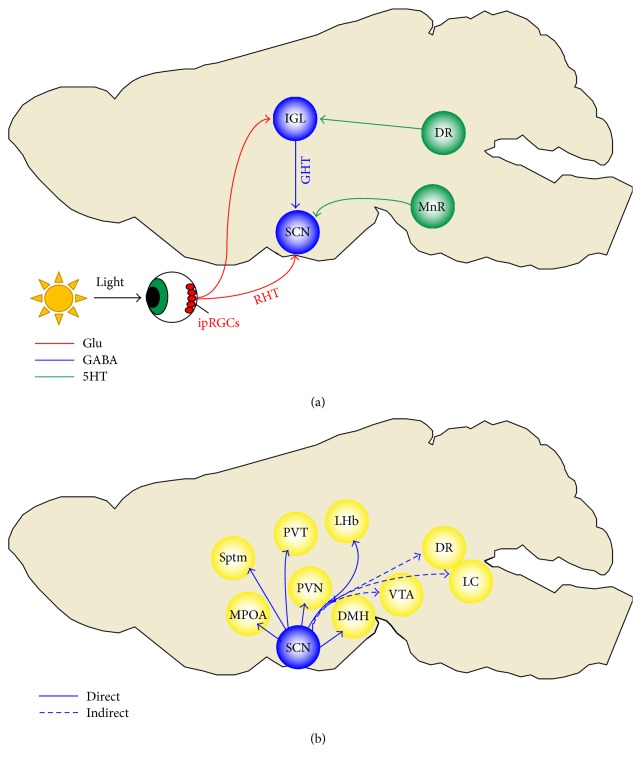Figure 1.
Inputs and outputs of the suprachiasmatic nucleus (SCN). (a) The main inputs to the SCN come from the intrinsically photosensitive retinal ganglion cells (ipRGCs), median raphe (MnR), and intergeniculate leaflet (IGL) (as reviewed in [38]). The retinohypothalamic tract (RHT) originates from ipRGCs and primarily terminates in the SCN. The RHT terminals release glutamate (Glu) and pituitary adenylate cyclase-activating polypeptide, which entrain the SCN to the light-dark cycle [379, 380]. ipRGCs also project to the IGL [381]. The pathway from the IGL to the SCN is called the geniculohypothalamic tract (GHT). GHT terminals release GABA and neuropeptide Y onto the SCN (as reviewed in [382]). GHT relays photic and nonphotic information to the SCN. The SCN also receives input from midbrain raphe nuclei, directly from the MnR and indirectly from the dorsal raphe (DR) through the IGL [383]. Serotonergic (5HT) signaling in the SCN modulates the effects of photic cues and plays a major role in the effects of nonphotic cues [130, 131]. (b) The SCN projects to other areas of the hypothalamus, including the paraventricular nucleus (PVN), dorsomedial nucleus (DMH), and the medial preoptic area (MPOA) (as reviewed in [38]). The SCN also directly projects to areas outside of the hypothalamus, such as the paraventricular nucleus of the thalamus (PVT), septum (Sptm), and lateral habenula (LHb). The SCN indirectly projects to the ventral tegmental area (VTA), locus coeruleus (LC), and DR [38, 43].

